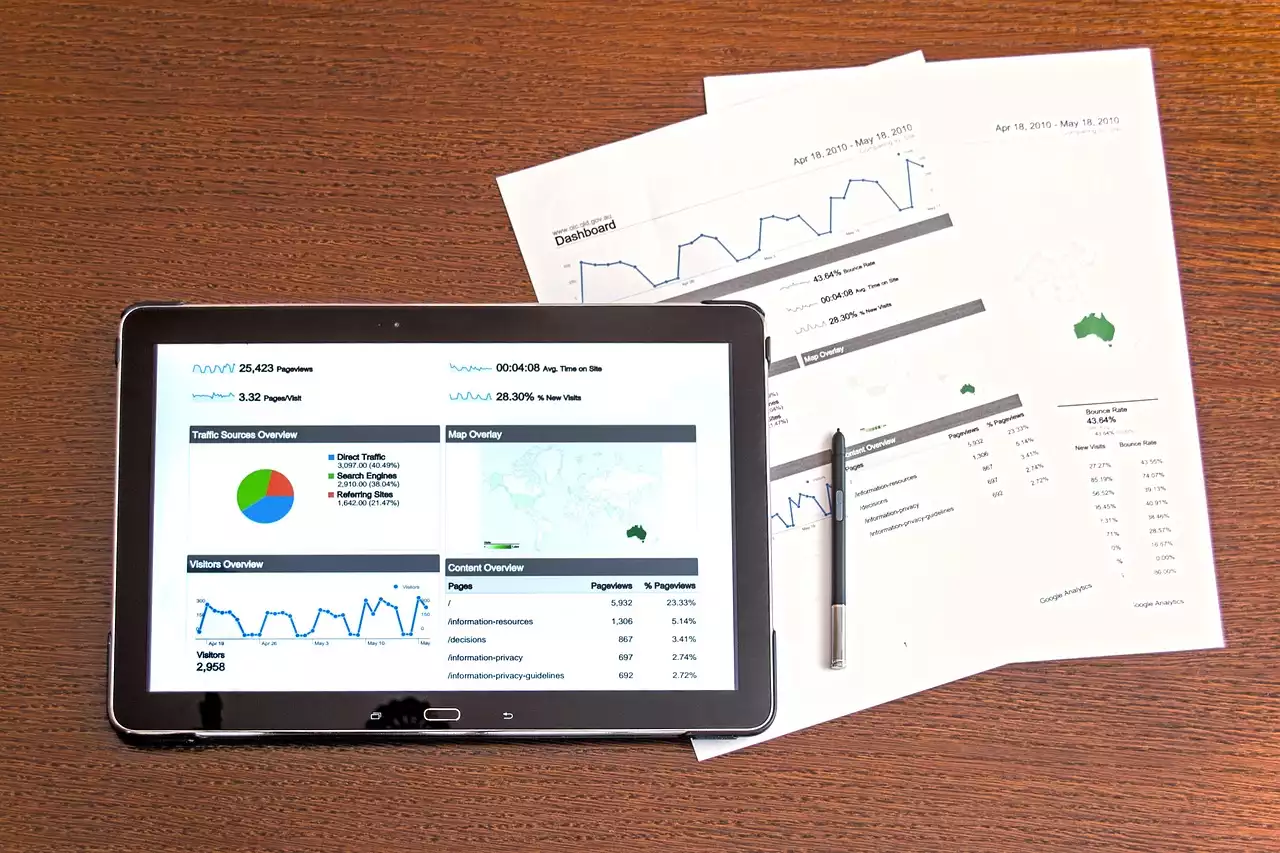Benefits of Using Google Analytics in SEM Campaigns
Google Analytics is a powerful platform that can provide you with a wide range of benefits when it comes to SEM campaigns. Here are some of the key benefits you can expect to experience when using Google Analytics in your SEM campaigns:
1. Track Website Traffic
One of the most significant benefits of using Google Analytics for SEM campaigns is the ability to track website traffic. With Google Analytics, you can monitor your website traffic in real-time, allowing you to see how many visitors are coming to your site, where they're coming from, and what pages they're visiting. This information can help you identify which SEM campaigns are driving the most traffic to your site, which keywords are performing the best, and which pages are the most popular.
2. Analyze User Behavior
Google Analytics can also help you analyze user behavior on your website. With this platform, you can track how long users are spending on your site, which pages they're visiting, and how they're interacting with your content. This information can help you identify which pages are the most engaging, which pages are causing users to bounce, and which pages need improvement.
3. Identify High-Performing Keywords
Another significant benefit of using Google Analytics for SEM campaigns is the ability to identify high-performing keywords. With Google Analytics, you can see which keywords are driving the most traffic to your site and which keywords are converting the most users. This information can help you optimize your SEM campaigns by focusing on the keywords that are generating the most traffic and conversions.
4. Analyze Conversion Rates
Google Analytics can also help you analyze your conversion rates. With this platform, you can track how many users are converting on your site, what pages they're converting on, and what actions they're taking before converting. This information can help you identify which pages and actions are the most effective at driving conversions, allowing you to optimize your SEM campaigns to generate more conversions.
Overview of Google Analytics Features
Before we dive into how to use Google Analytics for SEM campaigns, let's take a quick look at some of the key features of this platform. Understanding the features of Google Analytics can help you make the most of this powerful tool and achieve better results with your SEM campaigns. Here are some of the key features of Google Analytics:
1. Real-Time Analytics
Google Analytics provides real-time analytics, allowing you to monitor your website traffic in real-time. This feature can be incredibly valuable when it comes to SEM campaigns, as it allows you to see how your campaigns are performing in real-time and make adjustments as needed.
2. Customizable Dashboards
Google Analytics also offers customizable dashboards, allowing you to create dashboards that are tailored to your specific needs. With customizable dashboards, you can see the data that's most important to you at a glance, making it easier to identify trends and make informed decisions.
3. Advanced Segmentation
Google Analytics also offers advanced segmentation, allowing you to segment your data based on a wide range of criteria. With advanced segmentation, you can see how specific groups of users are interacting with your site, allowing you to identify opportunities for improvement and optimization.
4. Goal Tracking
Google Analytics also offers goal tracking, allowing you to track specific actions that users take on your site. With goal tracking, you can see how many users are completing specific actions, such as making a purchase or filling out a form. This information can help you optimize your SEM campaigns to generate more conversions.
Setting Up Google Analytics for SEM Campaigns
Now that you understand the benefits of using Google Analytics for SEM campaigns and the key features of this platform, let's take a look at how to set up Google Analytics for your SEM campaigns. Here are the steps you need to follow to get started:
1. Create a Google Analytics Account
The first step to setting up Google Analytics is to create an account. To do this, go to the Google Analytics website and click on the "Start for free" button. Follow the prompts to create your account, and then add your website to Google Analytics.
2. Install the Tracking Code
Once you've created your Google Analytics account and added your website, you'll need to install the tracking code on your site. This code allows Google Analytics to track your website traffic and user behavior. To install the tracking code, follow the instructions provided by Google Analytics based on the type of website you have.
3. Set Up Goals
The next step is to set up goals in Google Analytics. Goals allow you to track specific actions that users take on your site, such as making a purchase or filling out a form. To set up goals, go to the "Admin" section of Google Analytics and select "Goals." Follow the prompts to set up your goals based on your specific needs.
4. Link Google Analytics to Google Ads
Finally, you'll need to link Google Analytics to your Google Ads account. This allows you to see how your SEM campaigns are performing in Google Analytics and make adjustments as needed. To link your accounts, go to the "Admin" section of Google Analytics and select "Google Ads Linking." Follow the prompts to link your accounts.
Analyzing Website Traffic Data in Google Analytics
Once you've set up Google Analytics for your SEM campaigns, the next step is to start analyzing the data. One of the most significant benefits of using Google Analytics is the ability to track website traffic in real-time, allowing you to see how your SEM campaigns are performing. Here are some tips for analyzing website traffic data in Google Analytics:
1. Monitor Traffic Sources
One of the first things you should do when analyzing website traffic data in Google Analytics is to monitor your traffic sources. This allows you to see where your website traffic is coming from, such as Google Ads or organic search. By monitoring your traffic sources, you can identify which SEM campaigns are driving the most traffic to your site and adjust your campaigns as needed.
2. Analyze Bounce Rates
Another important metric to analyze in Google Analytics is bounce rates. Bounce rates refer to the percentage of users who leave your site after viewing only one page. High bounce rates could indicate that your SEM campaigns are not targeting the right audience or that your landing pages need improvement. By analyzing bounce rates, you can identify opportunities for improvement and optimize your campaigns to generate more engagement.
3. Monitor Time on Site
You should also monitor the time users are spending on your site. This metric can help you gauge how engaged your users are with your content. If users are spending very little time on your site, it could indicate that your content is not engaging or that your site is difficult to navigate. By monitoring time on site, you can identify areas for improvement and optimize your SEM campaigns to generate more engagement.
Identifying User Behavior with Google Analytics
In addition to tracking website traffic, Google Analytics can also help you identify user behavior on your site. Understanding user behavior is key to optimizing your SEM campaigns and generating more conversions. Here are some tips for identifying user behavior with Google Analytics:
1. Analyze User Flow
One of the most powerful features of Google Analytics is the ability to analyze user flow. User flow refers to the path users take through your site, from the landing page to the conversion page. By analyzing user flow, you can identify which pages are causing users to drop off and which pages are the most effective at driving conversions. This information can help you optimize your SEM campaigns to generate more conversions.
2. Monitor Exit Pages
You should also monitor exit pages in Google Analytics. Exit pages refer to the pages that users leave your site from. By monitoring exit pages, you can identify which pages are causing users to leave your site and adjust your SEM campaigns as needed.
3. Analyze Site Search
Finally, you should analyze site search data in Google Analytics. Site search data refers to the keywords users are searching for on your site. By analyzing site search data, you can identify which keywords are the most popular and adjust your SEM campaigns to target those keywords more effectively.






.png?size=50)



